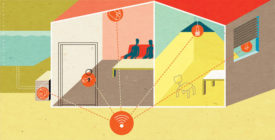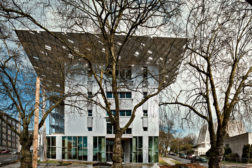Architectural Technology
As building-control apps go mainstream, home-automation providers explore wireless options.
Read More
Moving Up in the World
Structural gymnastics help ultrathin, ultra-tall residential towers for the ultrarich make their mark on the Manhattan skyline.
Read More
Modular Classroom Makeover
New designs for portable school buildings make improvements that are more than cosmetic.
Read More
Facade Retrofits: Wrap It Up
Face-lifts for three buildings showing their age aim to correct performance problems, project a more desirable image, and address the needs of new occupants.
Read More
Making Sense of the New LEED
The latest version of the widely adopted green building standard is set to debut in November with the most thorough overhaul since its inception. Here’s what you need to know.
Read More
Urban Agriculture Grows Up
A wave of rooftop greenhouses and vertical farms captures the imagination of architects while offering an alternative to conventional cultivation methods.
Read More
Dynamic Facades: Buildings Show Off New Moves
To enhance environmental performance and create dramatic visual effects, architects devise facades that adapt to changing conditions.
Read More
Copyright ©2024. All Rights Reserved BNP Media.
Design, CMS, Hosting & Web Development :: ePublishing


